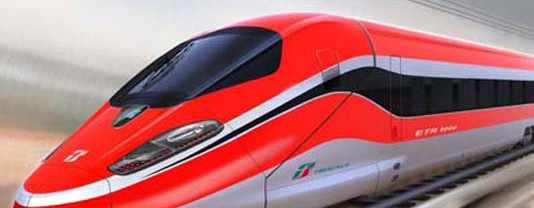A market which is not yet saturated in Europe and is expanding significantly in the rest of the world. High-speed is running faster and faster on the tracks of technology and seeks to exceed the levels of performance and services offered by air travel. A market analysis supported by the words of an important international giant and a roundup of the most recent productions offered by the main players in this sector.
According to an article published on https://www.credit-suisse.com China is racing against the rest of the world with high-speed trains, with an annual market volume of more than EUR 12 billion on the line. In just ten years, the Chinese have managed to build a high-speed network that is now more than 10,000 km long – the longest high-speed route in the world. It connects Beijing with Guangzhou. The train travels 2,300 km in less than 10 hours, meaning a speed of 300 km/h. The project was stalled due to a massive bribery affair, and in 2013 the former railway minister Liu Zhijun was given a suspended death sentence. However, it now seems that the Chinese are ready to work on foreign expansion as the domestic market is soon to be saturated. They are relying on their own technology to do so. While they had agreed on patents with Western train manufacturers for any foreign projects, these are gradually expiring. After China, the market leaders are Japan with 17% (mainly Hitachi, Kawasaki, and Mitsubishi), France’s Alstom with 12%, and Germany’s Siemens with 6%. Among the other providers (17%) are Canada’s Bombardier and Spain’s Talgo. SCI Verkehr states that about 90% of the approximately 3,200 trains in operation around the world are located in the seven largest markets: China, France, Japan, the UK, Germany, Spain, and Italy (data source: www.credit-suisse.com). The data published by Credit Suisse is backed up by the words of the CEO of an international giant in the world of general transport, railways in particular: Bombardier. Luigi Corradi, engineer, Chairman and CEO of Bombardier Transportation Italy, one of our main interlocutors in this market analysis, says: “Asian manufacturers, which initially saw a saturation in production capacity in their own market, having acquired levels of technological knowledge on a par with Europe, can today see important outlets for their business on the international market and consequently they are set to become competitors (with an increasingly higher potential) on all the opportunities concerning high speed. I think it is plain for all to see that their commercial strategy is particularly aggressive in emerging markets”. Corradi’s opinion is supported by Luigi Musso, Main Line Product Director Alstom Transport, the other main interlocutor of this market research: “In Japan, high speed started in 1964 and since then it has continued to expand. In Asia, after deployment in South Korea and Taiwan, the high speed network has significantly expanded in China. Russia is now assessing to build new dedicated lines, starting from Moscow-Kazan, after the success of the already introduced high speed connections”.
by Anna Celenta
Photo: Frecciarossa Bombardier – AnsaldoBreda
Full article is available only for registered users.
Click the link below to download pdf version of Railway Engineering
